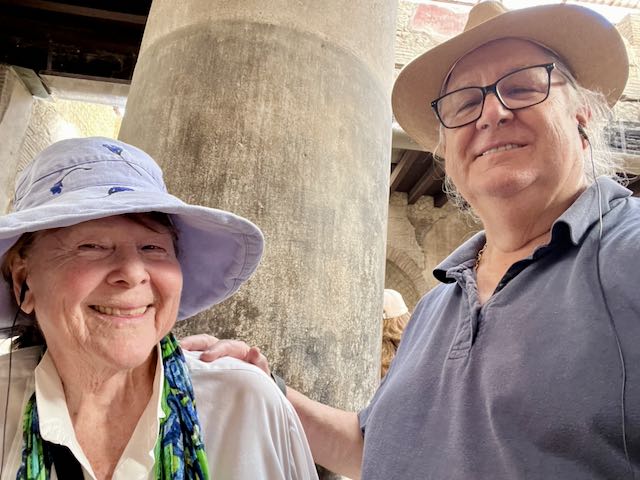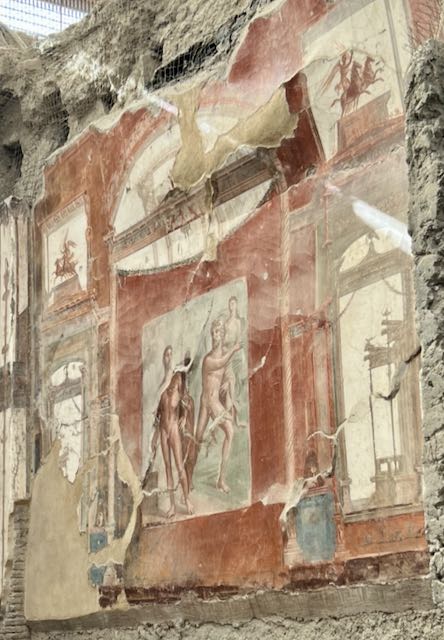Several years ago, we visited Pompeii and were so amazed to see those ruins and all the artefacts that had been recovered. Recently there was a PBS special about an excavation which revealed another home and explored the people who might have lived there and what they did. Truly amazing stuff actually. Having been to Pompeii, it seemed like a reasonable thing to visit Herculaneum.

Like the nearby city of Pompeii, Herculaneum is famous as one of the few ancient cities to be preserved nearly intact, as the solidified material from the volcano that blanketed the town protected it against looting and the elements. Although less known than Pompeii, it was the first and, for a long time, the only discovered city that had been covered after the eruption of Mount Vesuvius in 79 AD. Unlike Pompeii, the mainly pyroclastic material that covered Herculaneum under approximately 66 feet of carbonized ash and preserved more wooden objects such as roofs, beds, and doors, as well as other organic-based materials such as food and papyrus.




According to the traditional tale, the city was rediscovered by chance in 1709, during the drilling of a well. In the years following the site’s uncovering, treasure seekers excavated tunnels and took artifacts. Regular excavations commenced in 1738 and have continued irregularly since. Today, only a fraction of the ancient site has been excavated. The focus has shifted to preserving the already-excavated portions of the city rather than exposing more.

Smaller than Pompeii with a population of circa 5,000, Herculaneum was a wealthier town. It was a seaside retreat for the Roman elite, and this was reflected by the extraordinary density of luxurious houses featuring lavish use of colored marble cladding, frescos and marble tile floors. Buildings of the ancient city include the Villa of the Papyri and the so-called “boat houses”. These “boat houses” would have been on the beach prior to the eruption. Afterwards, the shoreline moved over a mile away. Within the “boat houses”, the skeletal remains of at least 300 people were found. It has been suggested that these people were waiting for a ship to arrive and evacuate them from the city. Unfortunately, the ship was unable to make it and they all perished together.








Also, within the boat house, was a boat that was more than 9-meters long, it was about 2.2-meters at its widest point and with a maximum height of about 1-meter from keel to gunwale. It would therefore have been much like a large modem gozzo boat which is a traditional fishing boat still seen in the Tyrrhenian Sea.






Today, when visiting Herculaneum, you drive through the Italian towns of Ercolano and Portici which lie above the former site. It is a very different feel than Pompeii as the site is so surrounded by the current city unlike Pompeii which as a lot of open space around it. Regardless, the significance of what happened in these places is clear to see and relatively easy to understand. All those people and the dreams they had snuffed out as a result of the volcano.

Cool!
Can’t imagine the fear those poor souls had. Must have been a very interesting visit
Oh my gosh! Such wonderful history! I love hearing about this! I look forward everyday to reading your accounts of the previous day! I’m so glad that you both are getting to experience these adventures…
Great post!!!
Very interesting article. Great photos of you and Janeen. Hugd
You are both teachers at heart. Thank you. The pictures of the two of you are my favorites!
Thank you for letting us enjoy your journey with you through the pictures and journaling. What an awesome experience!
Have been to Pompeii but not to Herculaneum. Fun that you’ve now done both. I’ve been enjoying your posts.
An amazing journey, looks like a very warm day.
Such a grand adventure you’re having!